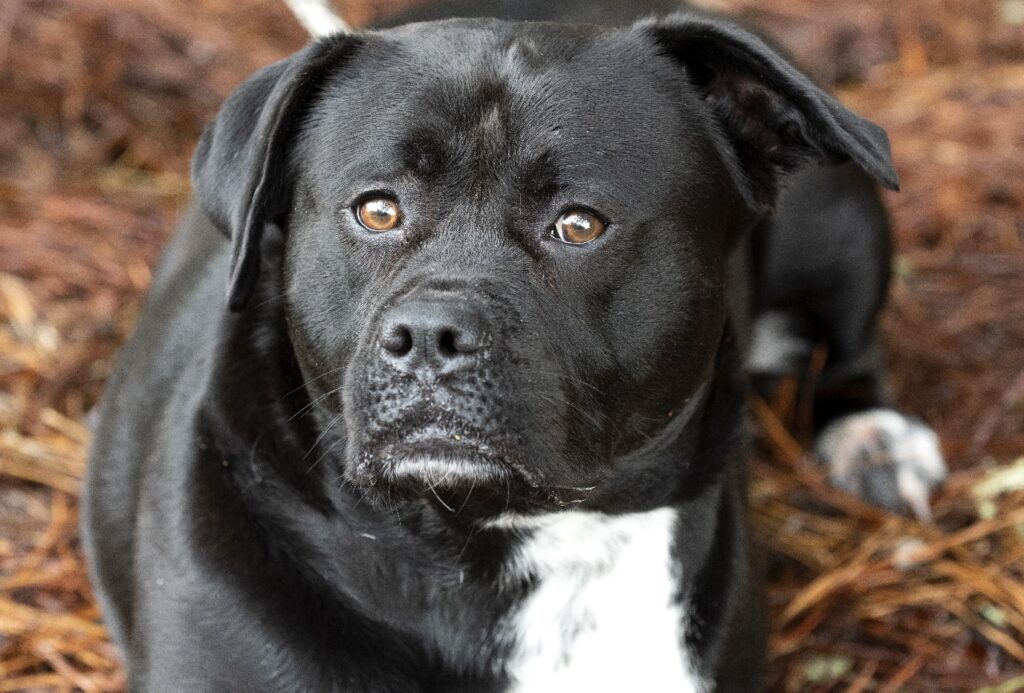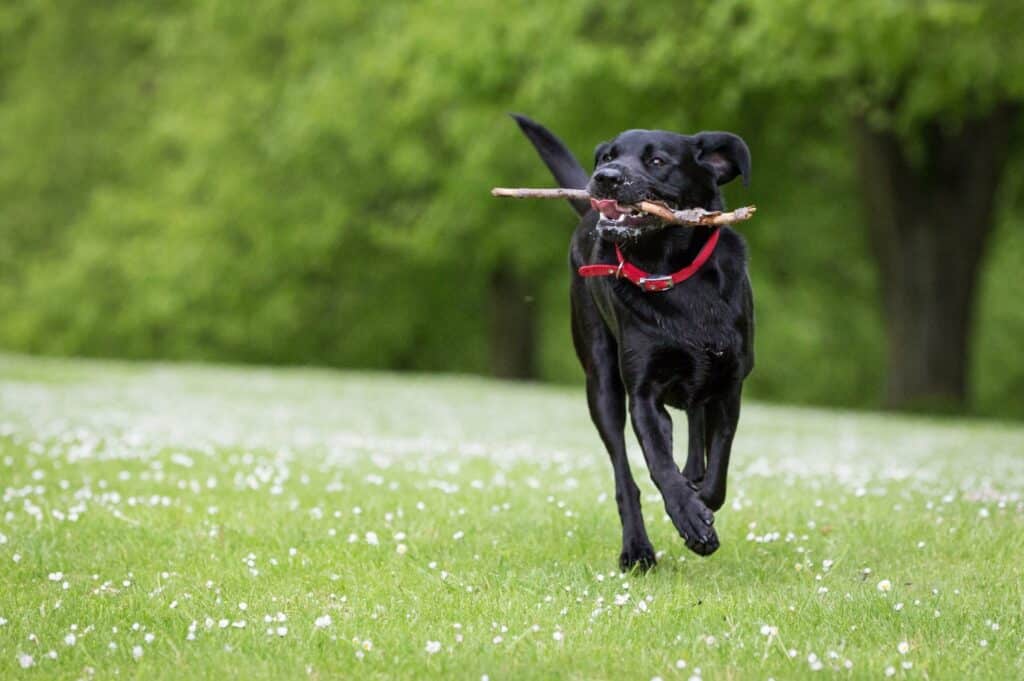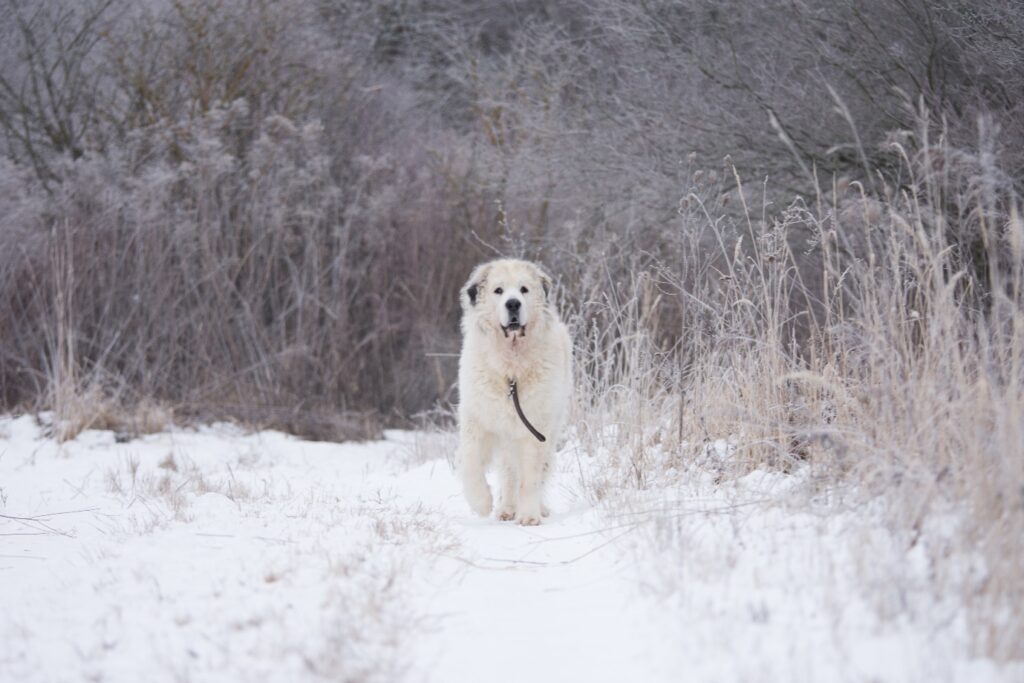Looking for a Great Pyrenees Lab Mix? This essential guide will tell you everything you need to know about this wonderful gentle giant breed.
We’ll cover the breed overview, appearance, temperament, training, aggression levels, exercise needs, mental stimulation, and more. Plus, we’ll answer some of the most common questions people have about the Great Pyrenees Lab Mix.
So whether you’re thinking of getting one or just want to learn more about them, this step-by-step guide is just for you!
Breeding overview
The Great Pyrenees Lab Mix is a large ancient breed of excellent guard dog used to guard sheep in the Pyrenees Mountains of Europe.
The exact origins of the Great Pyrenees are North America (1824), but they are believed to be descended from the Molosser dogs of ancient Greece.
The Labrador Retrievers are also an ancient breed, originating in Newfoundland, Canada, in the 1700s. They were originally bred as working and livestock guardian dogs to help fishermen haul in their nets from the icy waters.
It’s unclear exactly how or why this hybrid vigor was first created, but it is believed that it was done intentionally to produce a dog with the best characteristics of both guardian dog breeds.
You may also like – Blue Heeler Great Pyrenees Mix – Beginners Guide!
Appearance
The Great Pyrenees Lab Mix is a large dog, with males reaching up to 32 inches tall and females up to 30 inches. They weigh between 85 and 115 pounds.
This mixed breed has a thick, double coat which is usually white or cream in color. Their outer coat has plenty of colors like; cream, white, black, yellow, grey, and brown.
Their head is large and muscular, with a long muzzle and floppy ears. They have dark brown eyes and a strong jaw. Their tail is long and thick and often curls over their back.
What’s their Temperament like?
Along with its hybrid status, the Great Pyrenees Lab mix is likely to exhibit characteristics of both its parent breeds. They are warm and welcoming to families and particularly fond of kids.
They are great with older kids, but their stature needs to be monitored and taught to be especially careful around younger kids. Moreover, their high intelligence makes them simple to instruct.
The Great Pyrenees Lab Mix was initially bred to keep watch and is naturally more active at night. So, it’s not uncommon that they would have trouble settling down and sleeping in the evenings.
“Temperament is less predictable in hybrid breeds because it can go either way. Inquiring into the parents’ personalities can help limit the range of possibilities.”
Training
As the Great Pyrenees Lab Mix needs proper training to become well-behaved around others, we’ve provided some key points to follow:
- You’ll want to start with basic obedience training and socialization and then move on to more advanced house training if you so desire.
- Either way, it’s important that you put in the time and effort to train your dog properly.
- One of the best ways to train your Great Pyrenees Lab Mix is to enroll in a puppy class.
- Puppy classes are designed specifically for young dogs and provide a great way to socialize your pup while also teaching them basic obedience commands. If you can’t find a puppy class in your area, you can always hire a professional trainer to help you out.
- In addition to formal house training, it’s also essential that you spend time teaching your Great Pyrenees Lab Mix good manners at home.
- It includes things like teaching them not to jump on people, not to beg for food, and to be gentle with their teeth.
- With a little patience and consistency, you’ll be able to teach your dog all of the manners they need to know.
Aggression Levels

Some dog breeds are considered more aggressive than others. But what about a Great Pyrenees Lab mix?
This mixed breed is considered good-natured, friendly, and easygoing. They’re also known for being great with kids.
So, you might wonder if a Great Pyrenees Lab mix would be a good choice for your family.
Every dog is different, and there’s no way to predict precisely how a Great Pyrenees Lab mix will turn out. However, this mixed breed is typically not aggressive unless it is provoked and feels threatened.
“The Great Pyrenees Lab mix is not a violent dog but will protect itself if it feels threatened or cornered by another dog.”
What’s their Exercise Needs?

The Great Pyrenees Lab mix is typically an outdoorsy dog.
They need approximately 60 minutes of daily exercise, including long walks and vigorous play. To ensure their health and overall growth remain on track, sufficient exercise should be provided on a regular basis.
When they do not engage in sufficient physical activity, they may become bored, leading to unruly and aggressive conduct.
Mental Stimulation
The Great Pyrenees Lab Mix is an energetic and playful dog that loves to have a good time. They are also knowledgeable, and they need mental stimulation to stay happy and healthy.
A bored Great Pyrenees Lab Mix can become destructive. So it’s important to provide them with plenty of toys and games to keep their minds active.
Physical activity is also important for this breed, and they should be taken on long walks or runs every day.
“With the right amount of exercise and mental stimulation, the Great Pyrenees Lab Mix makes an excellent companion for active lifestyle families.”
How to Groom them?
The Great Pyrenees Lab mix is a cross between the Great Pyrenees and the Labrador Retriever. They are large dogs with thick, fluffy double coats. They require regular grooming to keep their coat free of dirt and matting.
- The first step in grooming your dog is to brush its dense coat fur. You should use a wide-toothed comb to brush its coat and remove any tangles or mats. Be gentle when regular brushing, as the Great Pyrenees Lab mix has sensitive skin.
- Next, you will need to bathe your dog using mild shampoo. You should avoid using human shampoo, as this can be too harsh for your dog’s skin.
- After shampooing, be sure to rinse your dog thoroughly so that no soap residue is left behind.
- Once your dog is clean, you will need to dry its fur. You should use a towel to pat their fur dry gently, or you can use a hair dryer on the low setting. Be sure not to hold the hair dryer too close to your dog’s skin, as this can cause burns.
- Finally, you will need to trim your dog’s nails. You can do this yourself at home with a nail trimmer designed for dogs, or you can take them to a professional groomer.
“Be sure not to cut their nails too close to the quick, as this can cause pain and bleeding.”
Are they Dog Friendly?
The Great Pyrenees and the Labrador Retriever are known for being friendly, outgoing dogs. However, it’s important to remember that every dog has individual tendencies.
So there is a high possibility that your Great Pyrenees Lab Mix will be dog friendly. The best way to ensure that your dog will get along with other canine companions is to socialize with them from a young age.
It means taking them to puppy classes, obedience training, and dog parks so that they can meet new dogs and learn how to behave around them.
With proper socialization, your Great Pyrenees Lab Mix should be a happy, well-adjusted dog who loves being around other dogs.
Are they Child Friendly?

A Great Pyrenees Lab mix will be an excellent companion for any family because of its loyal and loving nature. They are very friendly family pets.
Although special training is required, the Great Pyrenees Lab mix will be excellent guard dogs and adore your family.
However, as a large-breed dog and fabulous family pet owners, you must provide them with their own dedicated area, whether that be a dog kennel or a separate part of the home.
Drooling levels
Drooling is an everyday activity for most canines. It’s not something to be concerned about, as it’s just a way for dogs to express their enjoyment of the food while eating.
The Great Pyrenees Lab mix is a giant dog breed with loose skin around the mouth and jowls. It makes it more difficult for them to retain saliva in their mouth, ultimately resulting in excessive drooling.
Due to their lack of adaptation to warmer conditions, Pyrenees puppies may be less energetic and slobber when overheating.
“Due to their vast jowls, loose skin around the mouth, and small nostrils, giant breeds tend to drool excessively.”
Barking Levels?
The barking levels of a dog are classified based on the number of times the dog barks in a minute. In simple terms, it’s called “barking level.”
There are six levels:
- Level 1 – No Barking
- Level 2 – Very Slight Barking
- Level 3 – Moderate Barking
- Level 4 – Loud Barking
- Level 5 – Extremely Loud Barking (Great Pyrenees Lab Mix may also bark excessively at strangers when they approach him)
- Level 6 – Continuous Barking-Moderate Barking
The Great Pyrenees Lab Mix is classified as a level three to four barker and is typically considered to be a moderate barker. Having said that, this energy breed is likely to bark excessively at strangers when they approach him.
“Great Pyrenees Lab Mix may also bark excessively when left alone or if they feel danger for their family.”
Adaptability to Weather

The Great Pyrenees Lab is a mixed breed dog that thrives in cold weather, with its thick white coats protecting them from the cold.
They have a double coat on their body, which helps them to keep warm when temperatures start getting low or when winter approaches.
Temperatures in the 80s and 90s have persisted for a while now, as summer arrived early this year. However, a Great Pyrenees Lab mix’s body can struggle in the high outdoor temps.
So it’s crucial to be mindful of weather conditions when we take them for walks. Overheating is a common problem in these dogs.
Lifespan
The Great Pyrenees Lab mix is an excellent dog for the whole family. They have an average lifespan of 10-12 years and make good life companions.
AKC Recognition
The Great Pyrenees Lab mix is a strong and popular breed that has been used for both working purposes as well as playing companions.
While this mixed breed isn’t registered with the AKC, both parent breeds have been registered.
The Great Pyrenees was first registered by the AKC in 1933, whereas the Labrador was registered in 1903.
Cost to Purchase
Great Pyrenees Lab mix puppies typically cost between $500 and $1,000. However, prices can vary depending on the breeder, the parents’ pedigree, and other factors.
When purchasing a puppy, be sure to ask the breeder about the dog’s health history and temperament to ensure that you get a healthy animal that will fit nicely into your family.
Final Thoughts
The Great Pyrenees Lab mix makes a great family dog. They are gentle, loving, and protective of their families. If you’re considering adding a Pyrenees Lab Mix to your home, be sure to read up on the breed and understand what you’re getting into.
While they can be wonderful additions to any family, they do need exercise, training, and plenty of love.
I hope you found this article helpful. If you’re interested in adopting one of these dogs, it’s best to contact your local animal shelter or rescue organization!
RECOMMENDED – The Ultimate Great Pyrenees Guide – All Questions Answered!


